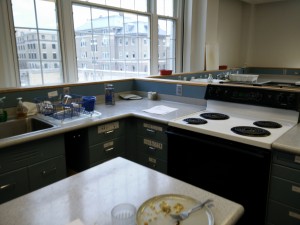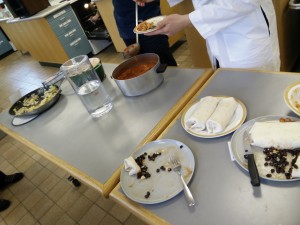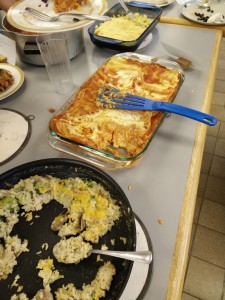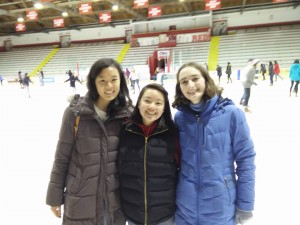This week the guests at the Rose cafe spoke to us about stress management in the upcoming weeks before finals. Rubenstein-Gillis and Gerding were from Gannett — Rubenstein-Gillis works with CAPS, Notice and Respond, as well as being available to faculty/staff who are concerned about a student’s well-being. Gerding works with CAPS as well, and is a general therapist. She also works closely with the Let’s Meditate program that goes on around campus.
The talk began by discussing what stress is and how we feel it. I personally get a slight tightness in my chest along with racing thoughts when I get stressed out, but other symptoms include a tight jaw, loss of appetite, a change in breathing patterns, or memory impairment. We then discussed how while stress has negative connotations, a small amount of stress is important in our lives because it motivates us to get work done. Without any stressors in our lives, we wouldn’t be motivated ot do any work. Rubenstein-Gillis then showed us the stress continuum. I’ve noticed this graph many times in Gannett before, but it was nice to have it really explained to us. As long as we stay on the green, left half of the continuum, we’re doing well. We have enough stress to do the work we have to get done. Once we get over to the red side of the continuum, though, we are on a path towards a breakdown, which is very bad. One of the important things about stress is that we sometimes don’t even realize we are stressed, which can be bad as well.
We then were given some useful tips on how to manage our stress and keep it at manageable levels. The first suggestion was to have a pre-work routine in place to condition our brain to realize that it is time to work. For example, we could clean off our desk, get a cup of tea, do some stretches, and then sit down to work. If we did this same routine before working every time our brains will get conditioned to realize that that routine signals work time, which will help us focus. I plan on implementing a pre-work routine as soon as I can think of one, hopefully by next week, because I really like this idea and think it will help me work more efficiently.
Another tip was to chunk work, something I already do to an extent. By breaking up tasks into smaller, more manageable pieces, we don’t get as overwhelmed by the amount of work that we have to do. We can do a chunk of work, take a rest, and then start working again. This is something I already do a bit, but plan to do more because it is a very good work technique.
The next topic is the typical one for any stress management talk: sleep. This is a part of stress management that I know I do well, because I make sure to get enough sleep every night. When we get sleep, our brains just function better. At our age, we should be getting 9.25 hours of sleep a night, which happens to be around how much sleep I like to try to get so I can function nicely. For napping, we should either sleep for 20 minutes or 2 hours, to get a proper amount of sleep cycle in.
At the end of the talk we did a brief 5 minute guided meditation that I actually found incredibly useful and calming. I plan to try to incorporate a lot of these techniques into my everyday life to try to reduce stress overall.







